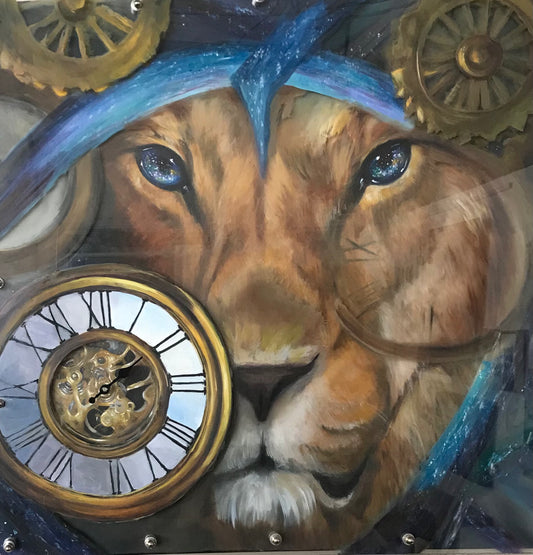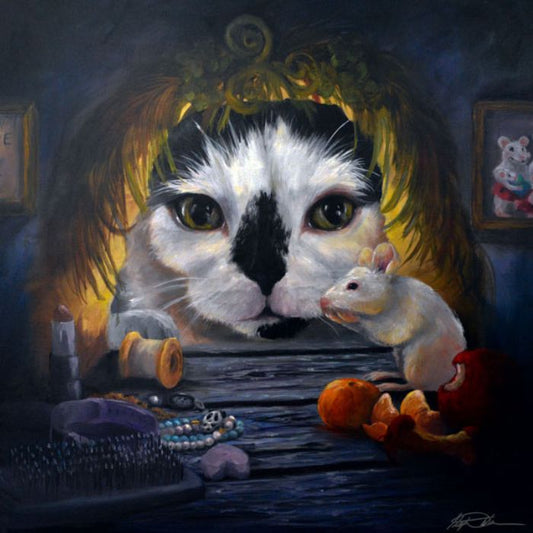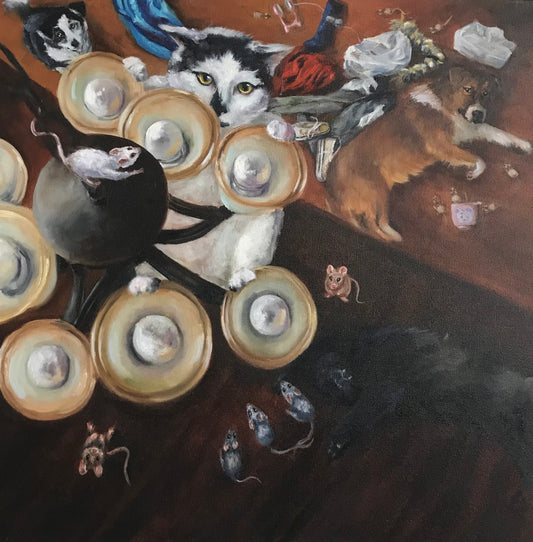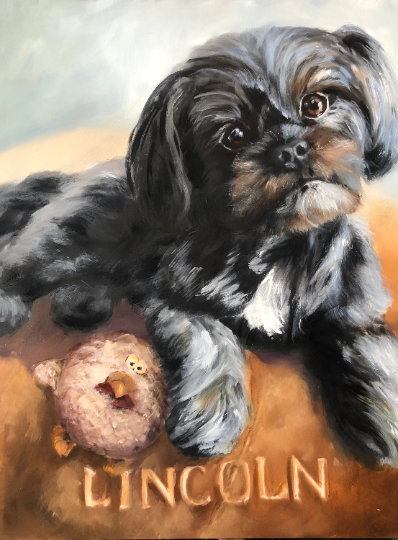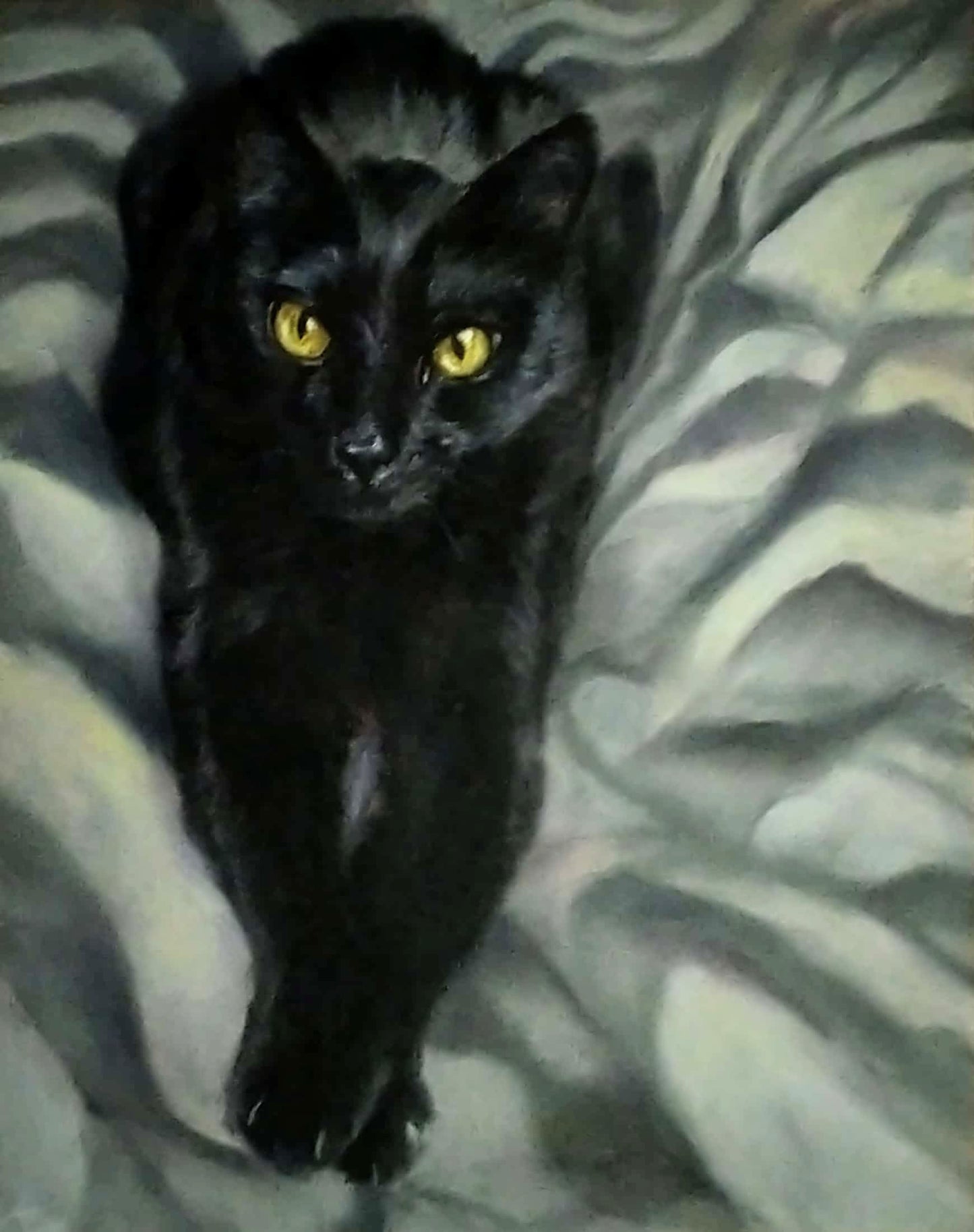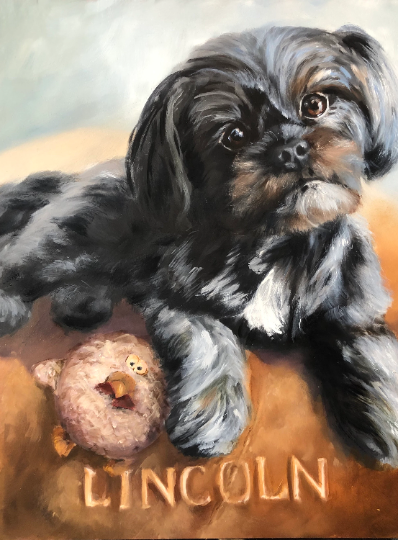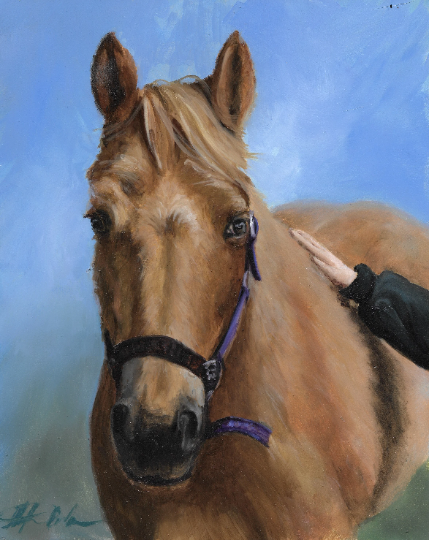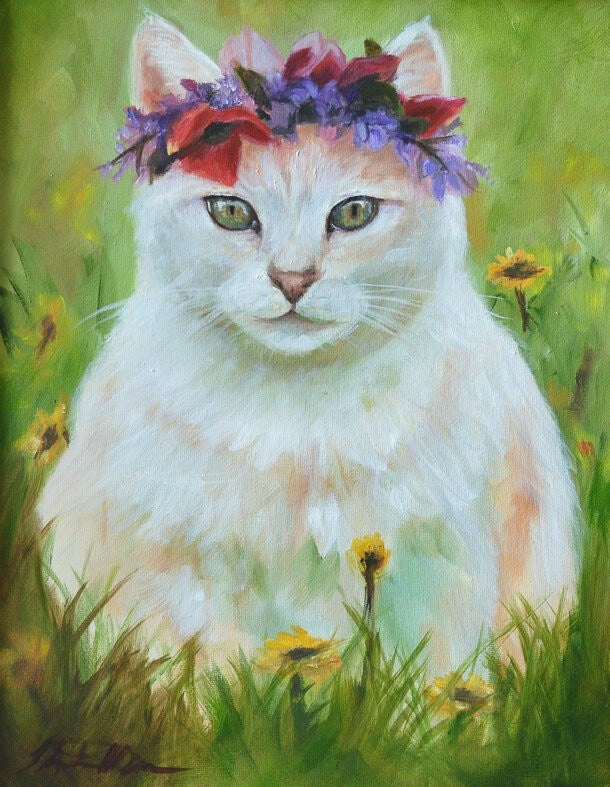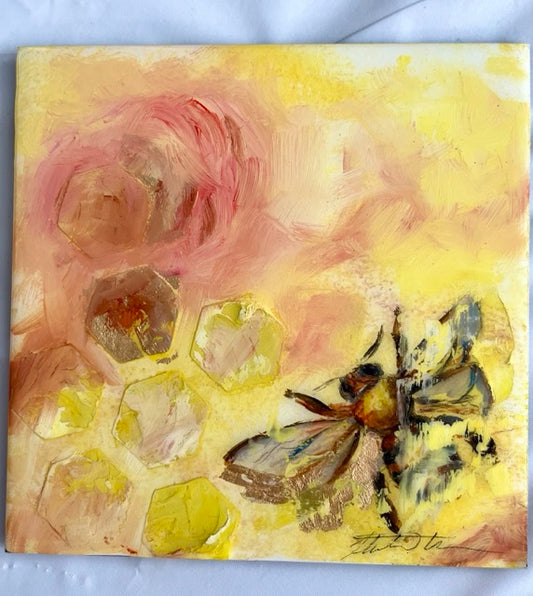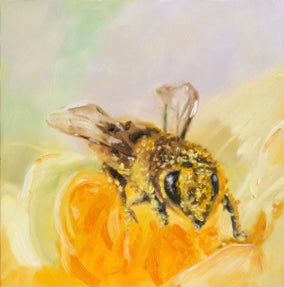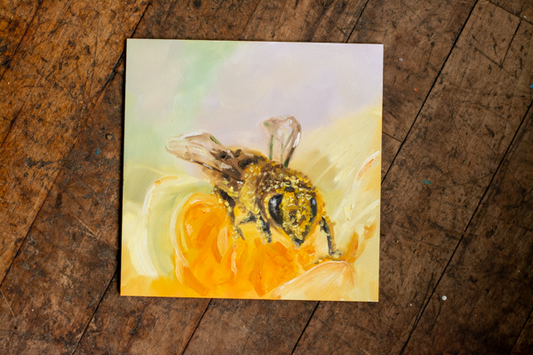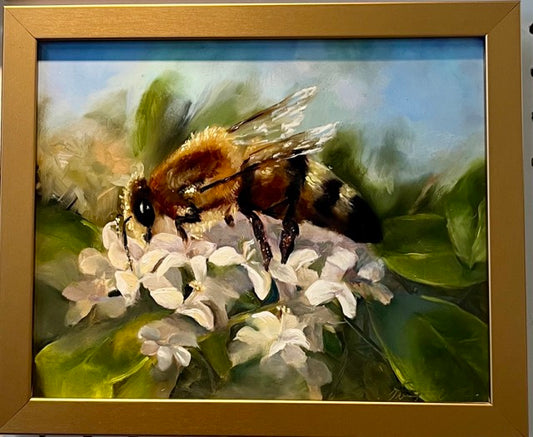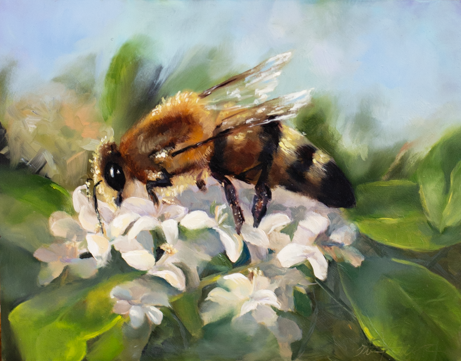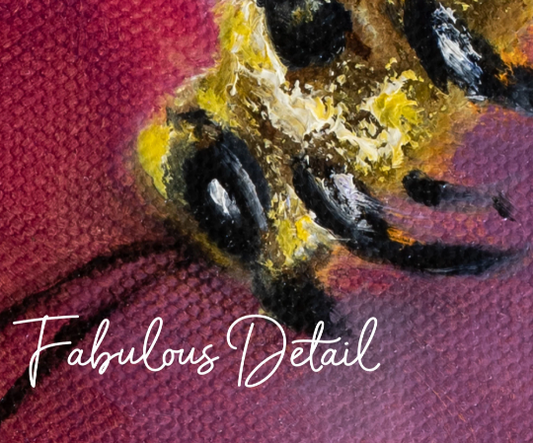How Bees Inspire Both Nature Lovers and Artists Alike with Animal Fun Facts
Bees have always captivated me, not just for their critical role in nature, but for their fragile beauty and intricate social structure. While I’ve had my share of unpleasant encounters—like getting stung three times by a yellow jacket in my 4th-grade class or stepping on a bee barefoot in a patch of clover—it’s the positive connections that have truly fueled my artwork.
One Thanksgiving, I experienced an unexpected moment that tied my fascination with bees to the research you're about to read. My in-laws discovered a hive tucked away in the attic of their home. Watching these bees swarm and seeing how they made a home in such an unexpected place was awe-inspiring. Thankfully, the bees were safely relocated, and no one was harmed. That said, the encounter inspired me to delve deeper into the life of bees—especially how they manage to survive when trapped in unusual locations, such as wall cavities.
To me, bees represent more than just tireless pollinators. They embody the fragile balance between strength and beauty, which makes them a powerful symbol in both nature and art. Their ability to create harmony in our world is something I try to reflect in my paintings, capturing their intricate beauty and purpose in every brushstroke.
This blending of art and nature offers a unique way to contemplate the delicate connections in our environment. In the following article, we'll explore the curious question of how long bees can survive when trapped in a wall—something that resonates with my personal experiences and inspired a grouping of bee artwork.
Through my paintings and this exploration of bee behavior, I hope to remind you that every small action matters—just as the smallest hole can be an invitation for bees to make a home, every detail in our environment holds significance.
All artwork was NOT AI generated, these are original artworks by Stephanie Weaver and all copyrights are protected.
How Long Can Bees Live Trapped in a Wall?
Because of my in-laws experience with the nest in their attic space I started wondering - how did they get trapped in the wall, how big can a bee hive get, basically my mind started walking through how a little bee was just bumbling around until it found a tiny space to crawl in their attic and setup shop! So, I did some research and here is what I found (welcome to the scattered mind of an overthinking artist :) ).
Bees, including honey bees, bumblebees, mason bees, and even large carpenter bees, are essential pollinators and while bees are generally seen as beneficial insects, they can become a real problem when they establish large colonies in places like wall cavities, roof spaces, or voids in buildings. The nest that they had in their space was quite large, and the buzz was audible from upstairs where we stayed, but not at all to those downstairs - which is why the bees were happily buzzing about untouched for at least an estimated 9 months...so how long bees can bees live when trapped in a wall is important, especially for property owners dealing with honey bee infestations, wasp nests, or even the occasional swarm of bees.
Types of Bees That Can Become Trapped
Several types of bees are known to establish nests in wall voids, roof spaces, or dormer roofs. Social bees, like honey bees and bumblebees, are more likely to form colonies in these areas. Honey bee colonies, in particular, can grow large, with established colonies living for a long time, even years, if undisturbed and this is what they had in their attic (in Mississippi).
On the other hand, solitary bees, such as mason bees and large carpenter bees, don’t form colonies. Instead, they lay eggs in small holes or cavities, including wall voids, but they are generally less of a problem compared to social bees. However, both types can still cause structural damage over time if left unchecked. At our house, the little carpenter bees loved the kids wooden swing set and fence posts, but they generally just fly away, but you still don't want to poke them because you may find out if it is a female or male. The female carpenter bees sting, but the male ones do not.
The Problem With Bees in Wall Cavities
Once a colony establishes itself in a wall cavity or roof void, it can live for a long time. Worker bees will continuously forage for nectar and pollen, storing it in the honeycomb, providing a food supply that sustains the colony. Queen honey bees in these colonies can live for up to several years, and during this time, they will lay eggs, expanding the size of the colony.
For property owners, the first sign of a bee infestation may be spotting small bees or scout bees flying around the building, looking for suitable nest sites. The first thing many people notice is buzzing sounds or bees entering through a vent hole or other small opening. If bees are left in wall cavities for a long time, their wax combs and honey stores can lead to significant structural damage. As colonies grow, the risk of attracting pests like varroa mites, spiders with their spider webs (ugh), or even wax moths increases. Gross right! I had to look up varroa mites - these are little buggers are nasty!!
Varroa mites (Varroa destructor) are parasitic mites that significantly impact honeybee colonies, including those that have colonized inside homes. These mites latch onto both adult bees and their larvae, feeding on their bodily fluids and weakening the bees' immune systems. In colonies that have settled in wall cavities or other parts of a house, varroa mites can quickly spread, exacerbating stress on the bees.
The presence of varroa mites in these colonies can lead to several problems:
-
Colony Collapse: Infested colonies may experience high death rates, with bees dying inside the walls. If untreated, this can eventually lead to the collapse of the entire colony.
-
Disease Transmission: Varroa mites are known vectors for viruses, including the Deformed Wing Virus (DWV), which can further decimate bee populations.
-
Increased Vulnerability: Bees infested with mites are less able to forage, defend the colony, or care for the queen and brood, leaving the hive more vulnerable to environmental stressors.
If a bee colony inside a home is infested with varroa mites, their presence may cause structural and odor issues due to decomposing bees and honey, and the mites can continue to affect nearby bees. I'll reiterate - it's AMAZING how little things matter!!! Check out what the little mites look like here.
Bees need surprisingly small spaces to start a colony. According to TheBugSquad.com , honey bees, for example, can enter through holes as small as 1/8 of an inch (3 millimeters) to establish a nest inside a cavity. While this opening may seem tiny, it’s enough for scout bees to explore potential nesting sites such as wall voids, roof spaces, or even inside hollow trees. Once inside, they can expand their colony, building wax combs and creating a hive.
For solitary bees, like mason bees or carpenter bees, even smaller holes can suffice, especially for nesting purposes. These bees typically look for natural cracks or existing small holes to lay their eggs.
If you're trying to prevent bees from establishing a colony in or around your home, it’s important to inspect and seal off any small gaps or openings around windows, rooflines, vents, and other potential entry points.
The Best Time to Remove Bees
Based on my reading from Clemson University, The best time for bee removal is typically during late winter or early spring. In early spring, colonies are still relatively small, and the bees are less active, making it easier to remove them. By late summer or early fall, colonies will have expanded, making removal more challenging.
For honey bee infestations, it’s important to perform live removal whenever possible. This involves relocating the bees, often with the help of a local beekeeping club or a swarm harvester. Bee removal specialists use protective clothing to carefully remove the bees and relocate them to a new home, ensuring the survival of the colony.
If a colony is too established, pest control companies may need to be called in for professional bee removal. They may use dust formulations or other pest control measures to eliminate the bees if live removal isn’t feasible.
How Long Can Bees Survive Trapped?
Bees can survive for varying lengths of time when trapped in a wall, depending on the food supply, oxygen level, and temperature within the wall cavity. If they have stored enough food, a bee colony can live for months or even through the colder months. During this time, queen honey bees will continue laying eggs, and worker bees will keep maintaining the colony.
If bees are unable to find enough possible food sources, the colony may begin to decline within a couple of days to weeks. Trapped bees may become desperate and start seeking exit points, sometimes resulting in dead bees piling up near windows or vent holes.
The good news is that bee colonies usually try to avoid being trapped in walls in the first place. They prefer good spots like hollow trees or well-ventilated wall voids where they can thrive for longer periods. However, when colonies do get trapped, quick intervention is the easiest way to prevent long-term issues.
The Role of Other Insects
While bees can survive for a long time if undisturbed, other insects like yellow jackets and queen wasps can also invade wall cavities. Wasp nests, especially paper nests, can be equally problematic as bees, although wasps do not store food like bees do, meaning their survival is more directly tied to the environment. Wasps and bees may even compete for nest cavities** in certain situations.
Unlike bees, wasps are more aggressive and pose more immediate risks to humans, particularly in areas with young children. For this reason, pest control operators often focus on removing wasps quickly, particularly in late summer when wasp nests are at their largest.
The Impact of Honey Bee Colonies and Removal
When a honey bee nest is removed, it is crucial to remove the entire colony—including the old queen, worker bees, honey stores, and wax combs. Leaving remnants of a colony behind can attract new swarms, especially in the following spring when bees search for a new nest. In recent years, bee infestations have increased, partly due to the increased urbanization of areas where bees previously thrived in natural environments, such as hollow trees.
Removal specialists may also advise sealing off any main entrance points and repairing wall cavities to prevent a new swarm from taking over the original colony's spot. County extension agents can offer guidance on bee removal and prevention, and in some cases, property owners may be encouraged to allow bees to live in specific areas of their property where they won’t cause harm.
Conclusion About Having Bees in the Walls
Bees can survive for a long time when trapped in wall cavities, especially if they have access to stored honey and a suitable environment. However, bee infestations pose risks to buildings and should be addressed promptly, either through live removal by a local beekeeping club or professional intervention by a pest control company. For property owners, the first time they encounter a bee problem should be treated as an opportunity to take preventative measures and seek removal services before the following year brings more bees to the property. By sealing entry points and performing regular inspections, property owners can prevent future bee infestations and ensure a healthy coexistence with these important pollinators.
Artistic Process: From Bee Inspiration to Oil Painting
Choosing a Bee as a Subject and the Bee Palette
When I set out to create the painting titled "Soft Bee - Pretty Bee", I was inspired by the delicate yet powerful presence bees have in our environment. Bees symbolize a connection to the natural world, playing a critical role in pollination and the preservation of ecosystems. By choosing a bee as the subject, I wanted to bring attention to their grace and fragility while also highlighting the importance of environmental awareness.
In the painting, I used complementary colors in soft values, blending the edges to create a gentle, harmonious feel. These soft edges reflect the bee's delicate nature, capturing the balance they bring to both natural systems and agriculture. Through this artistic choice, I wanted to convey the idea that while bees are resilient, they are also vulnerable to the growing threats posed by habitat loss and climate change.
By featuring a bee as the focal point, I hoped to encourage viewers to consider their own connection to nature and the role they can play in supporting conservation efforts.
Oil Painting Techniques Used in This Bee Artwork
This bee artwork, "Golden Harvest" (Original Oil Painting, 6" x 6"), was created using mixed media painting techniques to enhance the layering and texture. The combination of various materials and methods helped bring depth to the piece, while the use of oil paint textures added richness and vibrancy. The incorporation of the honeycomb in art symbolizes the bee's natural environment, adding a dynamic, textural element that contrasts beautifully with the softness of the bee's wings.
Layering and Texturing
To create texture in the honeycomb shapes, I used Liquitex modeling paste with a honeycomb stencil, which allowed me to build up layers of oil paint in a way that added depth and dimension to the piece. The honeycomb texture stands out, giving the viewer a tactile sense of the bee's environment, while also emphasizing the geometric contrast against the softness of the bee itself.
Beyond its visual impact, the honeycomb symbolism in art represents community, interconnectedness, and the delicate balance of nature. The honeycomb structure is a nod to the collaboration that occurs within the bee colony, as well as the broader environmental balance bees help maintain.
The rough yet deliberate strokes of the modeling paste application create dynamic highlights and shadows within the honeycomb, drawing the viewer’s eye toward this intricate structure. This method enhances oil paint textures, making the honeycomb feel more alive and three-dimensional while also serving as a symbol of nature's interconnectedness.
Creating a Flowing Background
For the background, I wanted to evoke a sense of movement and warmth, as if the air around the bee was buzzing with life. I achieved this by using soft brush strokes to seamlessly blend warm yellows, soft pinks, and muted oranges. The goal was to make the background feel fluid, yet subtle, allowing the bee to remain the focal point. By blending oil paint carefully, I avoided harsh lines and transitions, creating a peaceful flow that complements the more detailed elements of the painting. This oil painting technique of using soft gradients enhances the overall warmth of the piece, symbolizing the nurturing and life-giving environment that bees contribute to.
Detailing the Bee
Painting the bee was a careful process of building up layers to bring out its form and depth. I started with a sketch, then dry brush oil of the bee's body and delicate features. Once I was satisfied with the values of the dry brush oil painting I applied some gold leaf in areas I wanted to shine and finally glazed in some of the oil colors.
By gradually adding layers of paint, I was able to capture the subtle reflections in the bee’s wings and the soft fuzz of its body. Using small, precise brush strokes, I worked on adding realism to the bee, particularly in the wings, where I wanted to convey their delicate, translucent nature. By layering different shades glazes in yellow, brown, and black, I was able to build up the richness of the bee's body, while still maintaining a sense of softness and fragility. This step-by-step process of layering not only added detail but also created a feeling of lifelike depth, ensuring that the bee stood out as the centerpiece of the artwork.
Displaying and Preserving Your Bee Painting
For *"Golden Harvest" and "Soft-Bee, Pretty-Bee", I took an extra step to ensure the long-term preservation and vibrancy of the painting by applying a crystal clear resin pour over the surface. This resin creates a smooth, glasslike finish that not only enhances the colors and texture but also provides an additional layer of protection. The resin pour seals the painting, safeguarding it from dust, dirt, and UV rays, all of which can degrade oil paintings over time.
In addition to its protective qualities, the resin gives the artwork a luminous, high-gloss finish that accentuates the details—especially the intricate textures of the honeycomb and the softness of the bee's wings. Unlike traditional varnishing, this resin coating forms a hard, durable surface, ensuring that the painting maintains its vibrancy and depth.
By using this technique, I’ve created a glasslike surface that not only enhances the visual impact of the piece but also adds longevity to the artwork, preserving its beauty for years to come.
Ideal Placement for Bee Artwork
Location of Artwork
Bee-inspired paintings, like "Golden Harvest", "Soft-Bee, Pretty-Bee", "Small Things Matter", "Purple and Yellow Bee" can add a unique and uplifting touch to a variety of spaces in your home. The vibrant colors, natural textures, and symbolism of bees make this type of nature art for home an ideal choice for enhancing a room’s aesthetic.
For a cozy and inviting atmosphere, consider displaying this bee artwork in a kitchen or dining area, where it can serve as a reminder of nature's role in our food systems.
In living rooms, a bee painting can become a striking focal point, especially in nature-themed or eco-conscious decor. Placing it above a fireplace or on a feature wall will draw attention and create a conversation piece, while also adding warmth and vibrancy to the room.
For more tranquil spaces, such as a home office or bedroom, this artwork can serve as a gentle reminder of the interconnectedness of nature and the importance of harmony in our environments. Its soft color palette and intricate details offer a calming effect, perfect for spaces where you want to unwind or focus.
Lighting Artwork
When deciding how to display oil paintings, consider lighting and positioning. Good lighting will bring out the textures and colors, while positioning the painting at eye level ensures it draws attention without overwhelming the space. With the right placement, bee artwork home decor can enhance the natural beauty and energy of any room.
Final Thoughts on Bees and Art
Bees are not only essential to our environment, but they also serve as a profound source of inspiration for artistic expression. Their beauty, industriousness, and connection to nature offer endless possibilities for creativity.
I hope you found this fascinating as I did, I find these small things fascinating...which is one of the many reasons when you see my artwork and I get into the details you'll notice that I add insects that are often ignored...but these small things matter.
Purchase your favorite piece today and contribute to raising awareness about the importance of protecting these vital pollinators.








